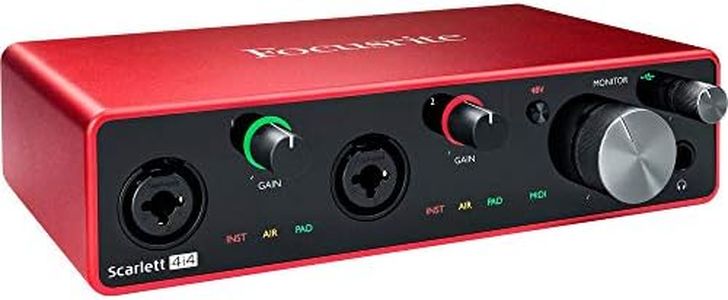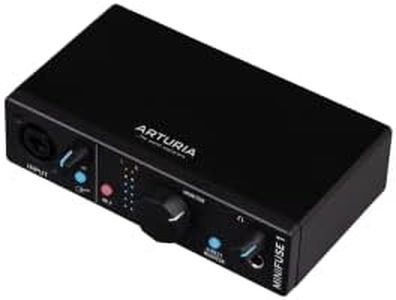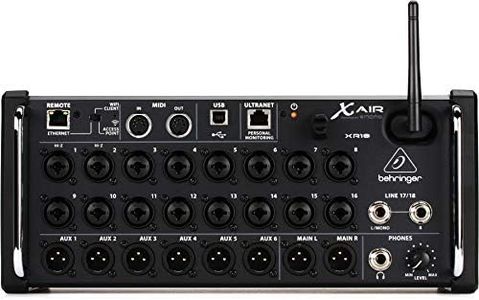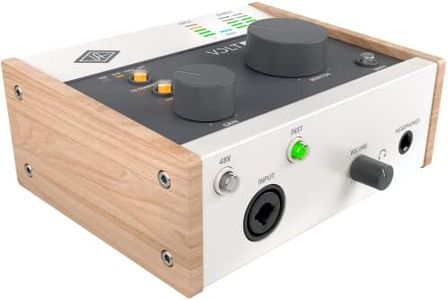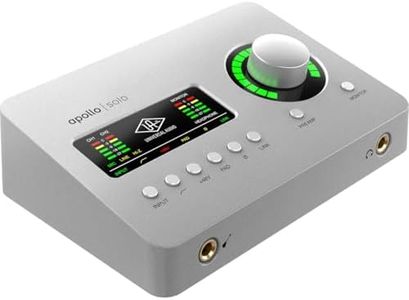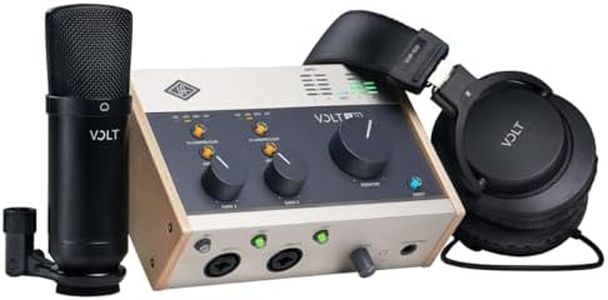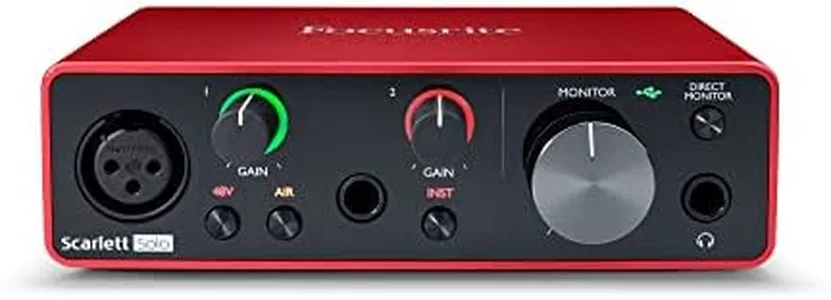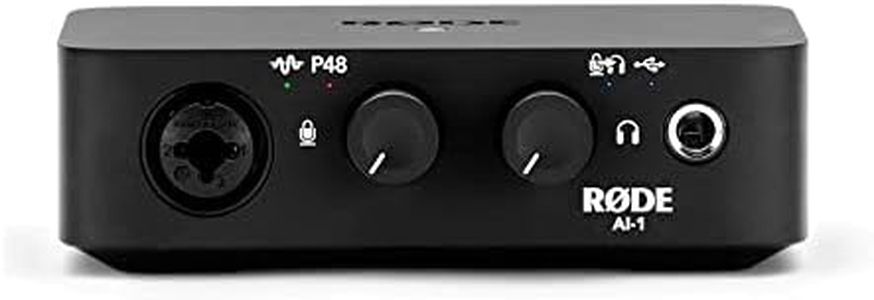We Use CookiesWe use cookies to enhance the security, performance,
functionality and for analytical and promotional activities. By continuing to browse this site you
are agreeing to our privacy policy
10 Best Audio Interfaces
From leading brands and best sellers available on the web.Buying Guide for the Best Audio Interfaces
Choosing the right audio interface can greatly impact the quality of your sound recordings and production experience. Whether you're recording music, podcasts, or simply want better audio for your computer, understanding what each feature does and how it matters to you is key. Think about what you plan to connect (like microphones, instruments), how many things you'll use at once, and the type of computer or device you'll use it with. The ideal audio interface should meet your specific needs without adding unnecessary complexity.Number of Inputs and OutputsInputs are where you plug things in, like microphones or guitars, while outputs send the sound out to speakers or headphones. The number of inputs and outputs you need depends on how many sources you want to record or play at once. Solo musicians or podcasters might only need one or two inputs, whereas bands or users recording multiple sources at the same time will want more. Always consider how much you want to record now and think if you might need more options in the future.
Connection TypeThis refers to how the audio interface connects to your computer or device, such as USB, Thunderbolt, or sometimes even older options like FireWire. USB is the most common and works with most computers. Thunderbolt offers faster speeds and lower audio delay but is more common on newer or higher-end computers. When choosing, consider what ports your computer has and if you need fast speeds for high track counts or low audio delay for real-time playing.
Phantom PowerPhantom power is a feature that supplies power to certain types of microphones, especially condenser microphones. If you plan on using these microphones, it's important that your audio interface can provide phantom power, usually labeled as +48V. If you only use dynamic microphones or instruments, you might not need this feature.
Bit Depth and Sample RateBit depth and sample rate determine the quality and clarity of your recordings. Higher values generally mean better audio quality, but they also result in larger file sizes. Typical home recording setups use 24-bit depth and 44.1 or 48 kHz sample rates, which are suitable for most music and voice recordings. Only go for higher values if you have a specific need like professional music production or film audio.
Preamps QualityA preamp boosts the signal from your microphone or instrument to a level that’s usable. Good preamps keep your sound clean and clear, especially when recording quiet sources. Audio interfaces differ in preamp quality—those with cleaner, quieter preamps are better for sensitive recording tasks like vocals or acoustic instruments. If you’re just starting out, most modern interfaces have decent preamps, but for critical recording, look for ones known for low noise and high clarity.
Direct MonitoringDirect monitoring lets you hear yourself with no noticeable delay as you record. This feature is important if you need to play or sing along with what you’re recording, which helps you stay in time and avoid being thrown off by a lagging sound. If timing is important to your work, or you find delays confusing when recording, make sure your interface supports direct monitoring.
Portability and Build QualityIf you plan to move your audio interface between different locations or travel with it, portability and how sturdy it is become important. Smaller, more rugged interfaces are easier to carry and less likely to be damaged during travel. If your interface will stay on your desk, then size and build might not matter as much, but a solid build generally leads to a longer lifespan.


